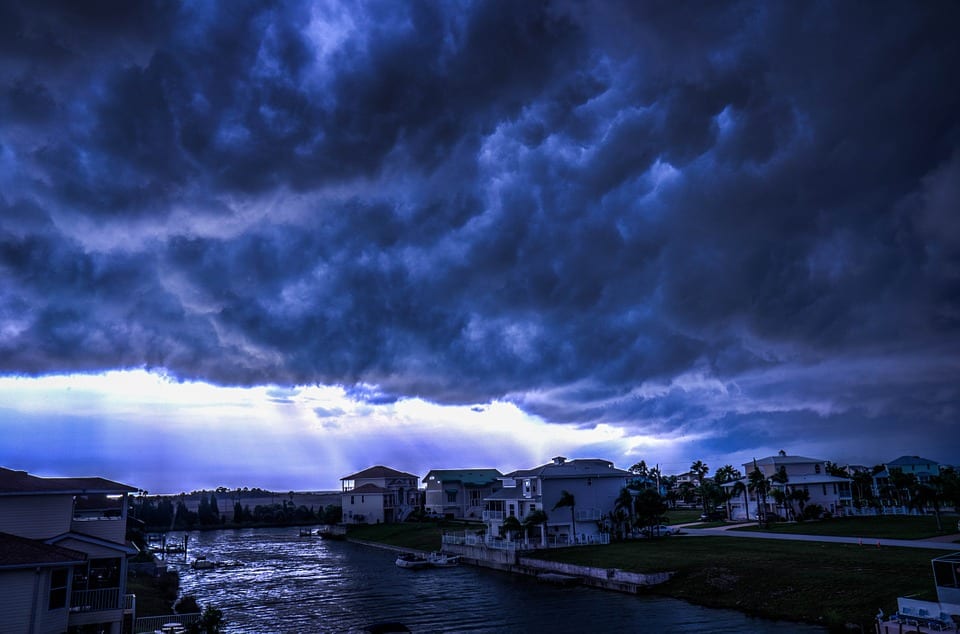Hurricane season, June 1 through November 30, is a time of caution for Florida residents because of the high probability of a hurricane. For those who are new to the state, it is important to know how to prepare for a hurricane. This step-by-step process will help Floridians, both old and new, prepare for and survive hurricane season.
Step 1: Track and follow the storm
Nothing is more crucial than knowing when and where the storm will hit and its severity. Being a residential student has its benefits, like quick information and direct communication from Office of Residential Life and Housing.
Aarika Camp, assistant dean of Student Services and director of Residential Life and Housing, said, “The safety of our residents is important. The Office of Residential Life and Housing prepares our residents by informing them with the emergency protocols and evacuation plans. To track the storm, we use a combination of multiple resources, such as weather.com, the Red Cross tracker app and the on-campus monitors.”
Shanygne Bitna, junior communication studies and dance major, said, “I track the storm by following emails, listening to radio and staying updated with social media.”
For commuters, storm information doesn’t come directly from Residential Life and Housing. These students can turn to off-campus resources, such as social media, radio, television and their peers to stay up-to-date.
Tristan Weiser, sophomore marine biology major, said, “I use a National Oceanic and Atmospheric Administration-affiliated app on my phone to track the weather, along with surf apps that give a look at tides, storm surges and winds.”
Step 2: Prepare a personal evacuation plan
Identify several evacuation locations ahead of time, and familiarize yourself with your surroundings. Residents can stay in their dorms as long as mandatory evacuation isn’t announced. If there happens to be an evacuation, follow the protocols provided by Residential Life and Housing. Students who have family near campus can go home before the storm.
For commuters, a valuable resource for evacuation plans is broward.org. This site has plans for shelter and evacuation advice. Go to the site, and click on hurricane preparedness in the recommended section. There are links to a hurricane preparedness guides and shelter options.
Step 3: Make a communication plan
Keep in touch with family members, friends and roommates. Residential students whose families are far away should keep in touch with their family members so that they know they are safe. If the campus does not evacuate, residential students can communicate with others in the dorms to plan groups to bunk with for the storm.
Step 4: Create a hurricane supply kit
Make a list, and gather the necessary materials and supplies. Go to shopping centers such as Walmart, Publix and Walgreens to stock up before the storm. Recommended supplies include nonperishable foods, water, batteries, flashlights, a first aid kit, gas in cars, protective clothing and tools. After purchasing supplies from shopping centers, ask for cash back or take out cash from an ATM just in case the power goes out during the storm.
“I would stock up on water, Lunchables, batteries and candles and make sure to have gas in all vehicles,” Weiser said.
For entertainment, gather some board games, puzzles, books, toys, Legos and cards to pass the time during and after the storm. Make sure to charge all electronics before the storm so you can stay updated if the power goes out.
Step 5: Follow emergency protocols
Heed all warnings to stay indoors or evacuate if necessary. All students will receive emails from the university notifying them of whether or not there will be an evacuation, as well as if classes will be cancelled. Students should listen to protocols on the radio or check for updates on social media. For social media, check NSU’s social media pages via Facebook, Twitter and Instagram.
Step 6: Prepare the interior of residence
Unplug all electrical appliances to avoid electrical problems during the storm. Store all loose items to prevent destruction and injury. Move the bed away from the windows to avoid shattered glass and anything the wind might blow into the room. Document all valuables just in case they get destroyed by the storm. If possible, use the tables, chairs and other living room furniture for cover.
Step 7: When the hurricane arrives
The storm is not a joke. Even if it seems like nothing is happening outside your window, the storm still holds potential for a dangerous situation. Do not go outside and wait for the storm, and do not track the storm in vehicles. When the protocol says to stay indoors, that means to stay indoors until further notice.
Step 8: When the hurricane is over
It is difficult to know when the storm has passed. Even if it looks safe outside, there’s still a chance that the bad weather will return at any moment. For students who stay on campus, listen for the “all clear” from the on-campus emergency system. For commuters, listen on the radio, or wait for the weatherman to say that the storm has passed.


